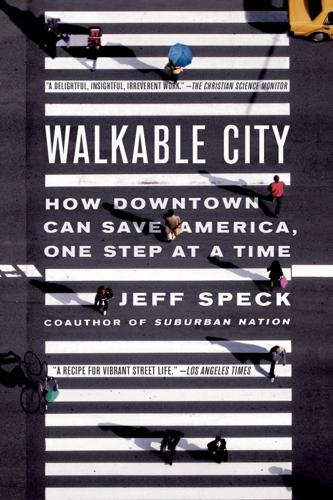
Walkable City: How Downtown Can Save America, One Step at a Time
by
Jeff Speck
Published 13 Nov 2012
(Koolhaas) “Where the Neon Lights Are Bright—and Drivers Are No Longer Welcome” (Summers) “White Men’s Roads Through Black Men’s Homes” Slogan Whitman, Walt Whyte, William Williams, Robin Wilson, Charles Erwin Wolverine World Wide World War I Wynkoop Brewing Company Yale University Yamasaki, Minoru Yelp website Young, Brigham Zeilinski, Susan Zipcar zoning; inclusionary Zynga ALSO BY JEFF SPECK Suburban Nation: The Rise of Sprawl and the Decline of the American Dream (coauthor with Andres Duany and Elizabeth Plater-Zyberk) The Smart Growth Manual (coauthor with Andres Duany) PRAISE FOR WALKABLE CITY “Brilliant and companionable … Walkable City is at once entertaining and enraging, its pages dotted with jaw-dropping statistics.” —Carlin Rosengarten, The Post and Courier (Charleston, S.C.) “Cities are the future of the human race, and Jeff Speck knows how to make them work.” —David Owen, staff writer at The New Yorker and author of Green Metropolis “It’s time to add a new name to the roll call of the city gang[,] Jeff Speck … It turns out to be exactly the right time for a down-and-dirty, step-by-step seminar on city repair—especially one conducted by as genial a presenter as Speck.”
…
” —Taras Grescoe, The Globe and Mail (Toronto) “Walkable City is an eloquent ode to the livable city and to the values behind it.” —Paul Goldberger, Pulitzer Prize–winning architecture critic and author of Why Architecture Matters “Jeff Speck is one of the few practitioners and writers in the field who can make a 312-page book on a basic planning concept seem too short … For getting planning ideas into the thinking and the daily life of U.S. cities, this is the book.” —Planning magazine “If you’re a professional planner or advocate, Walkable City is a new, essential reference. If you’re new to the subject, there’s no better introduction.”
…
Walking, the Urban Advantage Why Johnny Can’t Walk The Wrong Color Green II: THE TEN STEPS OF WALKABILITY The Useful Walk Step 1: Put Cars in Their Place Step 2: Mix the Uses Step 3: Get the Parking Right Step 4: Let Transit Work The Safe Walk Step 5: Protect the Pedestrian Step 6: Welcome Bikes The Comfortable Walk Step 7: Shape the Spaces Step 8: Plant Trees The Interesting Walk Step 9: Make Friendly and Unique Faces Step 10: Pick Your Winners Acknowledgments Notes Works Cited Geographic Index General Index Also by Jeff Speck Praise for Walkable City Copyright PROLOGUE This is not the next great book on American cities. That book is not needed. An intellectual revolution is no longer necessary. What characterizes the discussion on cities these days is not a wrongheadedness or a lack of awareness about what needs to be done, but rather a complete disconnect between that awareness and the actions of those responsible for the physical form of our communities.
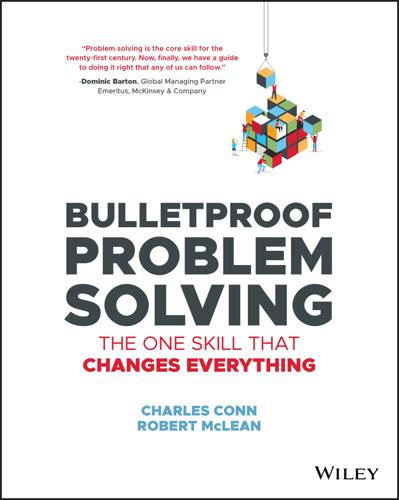
Bulletproof Problem Solving
by
Charles Conn
and
Robert McLean
Published 6 Mar 2019
This example is just a simple one to show how regression analysis can help you begin to understand the drivers of your problem, and perhaps to craft strategies for positive intervention at the city level. As useful as regression is in exploring our understanding, there are some pitfalls to consider: Be careful with correlation and causation. Walkable cities seem to almost always have far lower obesity rates than less walkable cities. However, we have no way of knowing from statistics alone whether city walkability is the true cause of lower obesity. Perhaps walkable cities are more expensive to live in and the real driver is higher socioeconomic status. Or perhaps healthier people move to more walkable communities. Regression models can be misleading if there are variables that we may not have accounted for in our model but that may be very important.
…
There are lots of advantages to this—in particular, your competitors are sure not to have your data. Let's take a look at two types of experiments that have become popular in the corporate world. Randomized controlled experiments allow us to test a change in one variable while controlling for all other variables. As we saw in the obesity example above, maybe it's not a feature of walkable cities themselves that makes people less obese. Maybe people who are already healthy tend to move to cities that are walkable because they like to walk. Experiments avoid this kind of potential mistake in understanding causality. But they're often hard to execute in practice. We can't easily make a city more pedestrian friendly and compare it to another city.
…
She recommends specific strategies for providing nutrition advice to parents, promoting breastfeeding for the first 12 months, and having a monthly visit to a doctor to monitor weight gain.8 There may be extraordinary leverage that can come from simple, straightforward actions to address the issue of child obesity and its knock‐on effects. 5. Walkability or Active Transport. Cities like New York or Tokyo are good examples of walkable cities. We decided to look at walkability in 68 US cities: it is a statistically significant variable in explaining obesity differences. The relationship is that a 10% increase in walkability reduces obesity by 0.3%. For the UK, this would have impact similar to a 10% tax on high‐sugar, high‐fat products.

City 2.0: The Habitat of the Future and How to Get There
by
Ted Books
Published 20 Feb 2013
This collaboration will weave an intelligence into the urban experience that improves life in remarkable ways. The city will be not only smarter but also better. Thousands of people walk daily along La Rambla, the leafy three-quarter-mile pedestrian mall in Barcelona, Spain. Image: nito/Shutterstock Walkable cities Why redesigning our communities around walking is the best medicine By Jeff Speck The best day to be a city planner in America was July 9, 2004 — the day Howard Frumkin, Lawrence Frank, and Richard Jackson published their book Urban Sprawl and Public Health: Designing, Planning, and Building for Healthy Communities.
…
This is due partly to diet but partly to planning: The methodical eradication from our communities of the useful walk — daily destinations reachable on foot — has helped to create the least-active generation in American history. This insult is compounded by the very real injuries that result from car crashes — the greatest killer of children and young adults nationwide — as well as an asthma epidemic tied directly to vehicle exhaust. Comparison of walkable cities versus auto-dependent suburbs yields some eye-opening statistics; for example, transit users are more than three times as likely as drivers to achieve their CDC-recommended 30 minutes of daily physical activity.1 Increasingly, it is becoming clear that the American health care crisis is largely an urban design crisis, with walkability at the heart of the cure.
…
He’s a former staff writer at the Atlantic Cities, and his work has appeared in publications such as the New York Times, Wired, Discover, Fast Company, and Domus. Find more of his work at nate-berg.com. Jeff Speck, former director of design at the National Endowment for the Arts, is a city planner based in Washington, D.C. His book, Walkable City: How Downtown Can Save America, One Step at a Time, was published in 2012 by Farrar, Straus and Giroux. John Metcalfe is a staff writer at the Atlantic Cities who lives in San Francisco. He has written for the New York Times, Seattle Weekly, and Washington City Paper. Before taking on his current urban-affairs beat, he covered weather and climate change for a Virginia TV station.
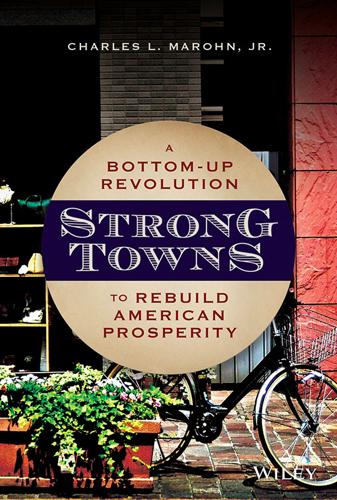
Strong Towns: A Bottom-Up Revolution to Rebuild American Prosperity
by
Charles L. Marohn, Jr.
Published 24 Sep 2019
That the change has come at such a great cost to our financial health and prosperity only makes it more disturbing. Financial realities demand that we make our cities more walkable, but it seems more than possible that this act will also make our lives better in unpredictable ways. As Speck suggests in Walkable City: We must understand that the walkable city is not just a nice, idealistic notion. Rather, it is a simple, practical-minded solution to a host of complex problems that we face as a society, problems that daily undermine our nation’s economic competitiveness, public welfare, and environmental sustainability.2 In fairly simple and straightforward ways, we can improve the financial health of our cities while improving people’s lives.
…
And as a professional running my own organization, I also have job security. If I decide I’m working from home to avoid nasty weather, there are no negative ramifications. For my neighbors that work multiple part-time jobs at or near minimum wage – and I’ve now met many of them – even being late has ramifications. Jeff Speck, author of Walkable City: How Downtown Can Save America, One Step at a Time, describes a good walk as one that is “useful, safe, comfortable, and interesting.” As I ponder how these four elements in what Jeff calls his “General Theory of Walkability” apply to my town, I recognize how despotic for people not in an automobile we have made this formerly walkable place.
…
Working together in an intentional way, it is possible to make our places stronger financially while also improving the lives of people. That is the essence of a Strong Towns approach, the bottom-up revolution America desperately needs. Notes 1 https://www.ncbi.nlm.nih.gov/pmc/articles/PMC5278644/. 2 Jeff Speck, Walkable City (New York: North Point Press, 2012). 3 Bill Bishop, The Big Sort (New York: Mariner Books, 2009). 4 Jonathan Haidt, The Righteous Mind: Why Good People Are Divided by Religion and Politics (New York: Vintage Books, 2012). 5 Patrick J. Deneen, Why Liberalism Failed (New Haven, CT: Yale University Press, 2018). 6 Jonathan Haidt, The Righteous Mind: Why Good People Are Divided by Religion and Politics (New York: Vintage Books, 2012). 7 Sebastian Junger, Tribe (New York: Hachette Book Group, 2016). 8 Ibid.

Streetfight: Handbook for an Urban Revolution
by
Janette Sadik-Khan
Published 8 Mar 2016
The waterfront road along the Hudson River, the site of the former West Side Highway near where I lived, was a jumble of dilapidated piers and parking lots, and the way there was littered with broken glass and crack vials. There was little attention given to the way the streets looked or felt. New Yorkers were desperately hanging on, trying to survive, not thinking about how these streets—the greatest asset in one of the world’s most walkable cities—could be used. Even then I was certain New York’s streets had more to offer. I came to the job of commissioner twenty-six years after Robert Moses’s death in a city that Moses might still have recognized. Moses saw in New York a city struggling to modernize and weighed down by its past. And more than anyone before or since, Moses had the means, the power, and the motivation to do something about it.
…
Whether neighborhood sidewalks or commercial corridors like Fordham Road in the Bronx, Nostrand Avenue in Brooklyn, Victory Boulevard on Staten Island, Flatbush Avenue in Brooklyn, or the warren of narrow streets in Manhattan’s Chinatown and Little Italy—these in-between places are a stage for New Yorkers, the urban filament where people sense and connect to the city’s energy. In walkable cities, sidewalk design can encourage walking by creating opportunities for things to do and see along the way. This could be shopping, eating, or clustering services in a particular area, which can enhance connectivity and eliminate the need for cars to run multiple errands. And sidewalk life isn’t just about movement.
…
Many people see their private vehicles as a means of liberation, but the less romantic counterpart to our Jack Kerouac fantasy is that cars sit idle upwards of 95 percent of the time and don’t disappear when not actively used. They require real estate. And whether totally free or metered at far below market rates, city parking consumes as much real estate in many cities as sidewalks or parkland. “Parking covers more acres of urban America than any other one thing,” Jeff Speck writes in Walkable City, referring to a study that found 500 million parking spaces are empty in the nation at any given moment. Huge swaths of city centers in places like Buffalo, Detroit, Hartford, Tulsa, and St. Louis have as much, if not more, acreage turned over to parking lots than to human activity. In many cities, private parking itself is a countervailing force to development, with parking “craters”—massive tracts of open-air parking lots in downtown areas—sucking away density, eroding the streetscape, and making urban centers feel as lifeless as, well, an empty parking lot.
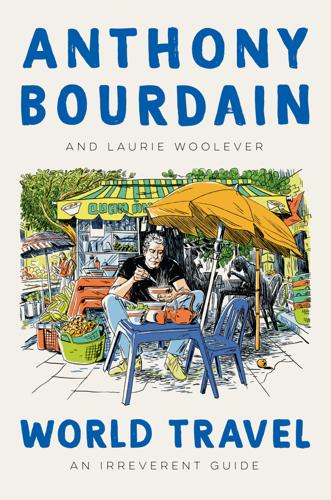
World Travel: An Irreverent Guide
by
Anthony Bourdain
and
Laurie Woolever
Published 19 Apr 2021
If you’re far from a taxi rank, you’ll need to call for a car (or have an Italian do it for you); in this case, be advised that the meter starts when the driver accepts the ride, not when you enter the vehicle. A typical ride will cost between 6 and 20 euros/US$7–$22, and a 5 to 10 percent tip for good service is appreciated. And of course, in most weather, Rome is a gloriously walkable city, with plenty to see and eat along the way to your destination. SLEEPING IN ROME * * * “I suggest the Centro Storico or historical center in the city, so you’re within walking distance of all the good stuff that you want to at least lay eyes on. Hotels are expensive, so book early if you’re shooting for lower-price pensiones, as they tend to fill up quickly.”
…
It is located about six miles south of Oaxaca’s historic center; a private cab ride takes twenty to thirty minutes and will cost 150 pesos/about US$7.50; a shared airport van is 48 pesos/US$2.50; for either choice, buy a ticket inside the terminal and tip 10 pesos for good service. Oaxaca is a pleasantly walkable city, with lots to see (and eat) along the way. For longer distances, hail a standard taxi or ask your hotel to call one for you. Not all drivers use the meter, so ask that your driver turn it on, or agree on a rate up front. Oaxaca has a few bus routes, but the buses are privately owned, and information about schedules, routes, and fares can be difficult to come by.
…
Single fares are calculated based on route and distance, starting at about SG$0.75/about US$0.50 and topping out around SG$3/about US$2.15. One-, two-, and three-day unlimited cards are available for tourists. SMRT also administers the city-state’s bus service and even its taxis; a taxi ride from airport to hotel should take about thirty minutes, and cost about SG$30/US$22. Singapore is also, in theory, a walkable city, though the average temperature is 88°F and it rains about ten days out of every month, so, as they say, your mileage may vary. And finally, a word to the wise. “Despite all my trips here, I don’t think I’ve ever seen a cop, but know this: when they say, ‘No drugs in Singapore,’ they are not kidding, and I mean really, really not kidding.
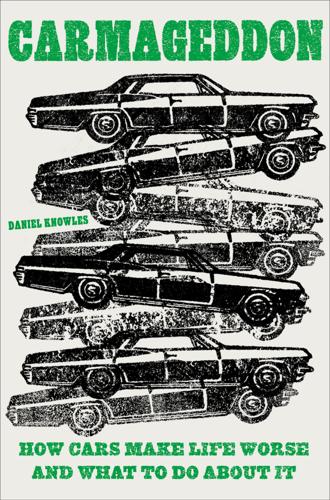
Carmageddon: How Cars Make Life Worse and What to Do About It
by
Daniel Knowles
Published 27 Mar 2023
It is also that when people can get around without a car, so much land is not needed for parking, and more homes can fit on a given patch of land. The less land is needed for parking, the more useful the stuff that can be squeezed onto it. That is why the most valuable real estate in the world is all in cities with good public transport. So why do more governments not invest in more walkable cities with public transport, given the returns? Well, here is the prisoner’s dilemma. Public transport requires collective decision making. Building a new railway only works if there are already people there to use it. But if people have already moved to a city without public transport, they will probably already have bought cars and moved to homes they can only access with cars.
…
Instead, each building is turned into a standalone entity, which people drive to and then drive away from without ever interacting with any of the other businesses nearby. Such places have less vibrancy; they are less cool. They are, I would also say, much uglier. There is a reason relatively few young people aspire to move to Dallas, whereas millions grow up wanting to live in New York, Paris, or Berlin. In a walkable city, a supermarket on a commercial street also supports barber shops, cafes, pubs, and so on, because people combine their trips and visit several businesses at once. That does not happen when you have to drive between each one. Ironically, that is why businessmen invented the shopping mall, and the strip mall—so that people can re-create the experience of shopping in lots of different places after parking once.
…
“There’s a demographic of young people who have the potential to pay a million [Canadian dollars], not in cash, but with a mortgage, even to C$1.3 million, and you’d take us as a group of customers and you push us to the suburbs,” she told me. That is why it is so damaging that so much new construction happens in sprawling, car-dependent places. We are missing a massive opportunity to give people lives they would like—lives that happen to be far more sustainable, as well as more pleasant—in walkable cities, and instead pushing them out to places that are developed entirely around the automobile. Each year the Houston metropolitan area, with a population of seven million, adds 70,000 new homes, almost all of them in the suburbs, while Dallas adds 60,000. The New York metropolitan area, by contrast, with a population three times higher, covering much of Long Island and New Jersey as well as the city, manages only 54,000.
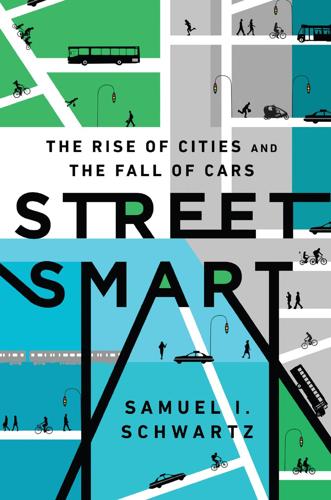
Street Smart: The Rise of Cities and the Fall of Cars
by
Samuel I. Schwartz
Published 17 Aug 2015
Within a year, it was stolen off the streets of Bensonhurst and I was reduced to riding a bike: in 1969, the opposite of cool. My stupidity, by the way, wasn’t limited to making trade-in decisions. My embrace of driving—while I had a car to drive, that is—was contributing to the demise of something smart—walkable city streets—though I didn’t realize it for years. I did attend classes, too. In New York State high schools, students take standardized tests, known as Regents Exams, in a variety of subjects, and at Brooklyn Tech I had scored the highest grade in the school on the physics exam. I wasn’t particularly interested in physics, but I thought it was my calling, so when the time came to choose a major, physics was it.
…
And, since they were the demographic cohort most likely to drive as adults—way more than city kids, anyway—their defection counted twice, the same way that a second-place team’s victory over the team they’re chasing adds a half game to the team behind and takes a half game away from the team ahead. By moving not to another suburb but to a walkable city, a suburban young adult electing not to drive isn’t quite a “man bites dog” newsflash, but it is certainly a snap at what had been a routine rite of passage since the end of World War II. After fifty years of mistaken decisions about America’s built environment, a lot of Millennials are looking for something different.
…
e Actually, everyone likes the sound of that kind of place. Though the percentages are highest among the young, more than half of forty- and fifty-year-olds reported a preference for living in mixed-use communities. f One consequence is that supply and demand are increasingly out of whack in desirable—that is, walkable—cities and neighborhoods. This leads inevitably to higher housing costs, and more and more stratification among Millennials: as prices get bid up, fewer and fewer low-earning families stay, which leads to a self-reinforcing cycle. Prices that go up tend to keep going up. One perverse result is that the highest-earning families end up with the lowest transportation costs.
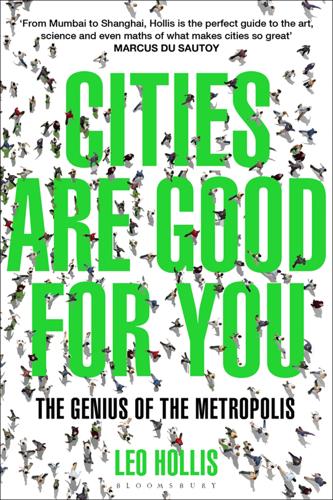
Cities Are Good for You: The Genius of the Metropolis
by
Leo Hollis
Published 31 Mar 2013
Cain, A., ‘Applicability of Bogotá’s Transmilenio BRT System to the United States’, National Bus Rapid Transit Institute, May 2006, pp. 41–2. 17. www.pps.org/articles/epenalosa-2 18. Thompson, C., ‘Why New Yorkers Last Longer’, 13 August 2007, nymag.com/news/features/35815/index1.html 19. www.walkonomics.com/blog/2011/04/getting-our-obese-cities-walking-again 20. Florida, R., ‘America’s Most Walkable Cities’, 10 December 2010, www.theatlantic.com/business/archive/2010/12/americas-most-walkable-cities/67988/ 21. www.telegraph.co.uk/news/worldnews/europe/france/7590210/Expressway-roads-along-Seine-to-be-closed-after-40-years.html 22. www.preservenet.com/freeways/FreewaysPompidou.html 23. www.guardian.co.uk/world/2012/aug/02/paris-seine-riverside-expressway-pedestrian Chapter 10: How Many Lightbulbs Does It Take To Change A City?
…
Between 2000 and 2009, the average vehicle miles travelled by this age group dropped by 23 per cent, and the number of young people who do not have driver’s licences has risen to 26 per cent.4 With improvements in bike lanes as well as public transport, more people are leaving their cars at home, or even at the dealership, when they travel into the city. In addition, as the promotion of more walkable cities gains momentum, they are also preferring to use the pavements, thus adding to the ballet of the streets. But this is not enough. Despite the advantages of urban living, we are still using too much energy, spewing out an unsustainable level of carbon emissions. We are producing too much waste, our cities create ‘heat islands’ that raise the atmospheric temperature, the materials – bricks, steel, plastic, glass – we use to build our houses and our streets are inefficient.
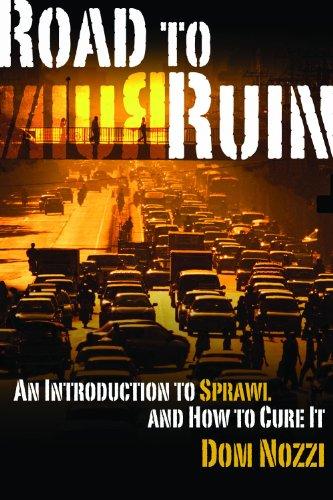
Road to ruin: an introduction to sprawl and how to cure it
by
Dom Nozzi
Published 15 Dec 2003
In my own work and in this book, I apply my own materialist understanding of what tools are effective—and therefore called for—to land use and human behavior. And despite a major theme of the book—that transportation drives (or deter-mines) land use—I am a professional planning practitioner. Therefore I elaborate more thoroughly the details of urban design than the details of transportation engineering. I love healthy, walkable cities—their energy, vitality, and rich diversity. I wrote this book in large part because I have seen the equivalent of too many monuments like my neighborhood street marker toppled, and because I fear that we are allowing cars to destroy the joys of the traditional city by dissipating their energy, sapping their vitality, and homogenizing their fascinating diversity.If we are to have the full use of automobiles, cities must be remade.
…
Buildings that have only a rear or side entrance (usually, an entrance oriented toward a parking lot) not only make travel highly inconvenient for pedestrians and public transit users but also cut the building off from street life—the building turns its back on the public and reduces urban vibrancy.36 As walkers in a walkable city, we want not only convenient, welcoming entrances on the sidewalk but also windows. What is more boring, deadly, and impersonal than a long expanse of blank wall? Homogenized, banal “icon architecture“ (also known as “cookie cutter” or “franchise” architecture), which immediately conveys a corporate image to the passerby—McDonald’s golden arches, Kentucky Fried Chicken’s red-and-white stripes—diminishes a city’s unique identity and creates what Jim Kunstler calls the “geography of nowhere.”37 A WOLF IN SHEEP’S CLOTHING We should be on guard not to allow projects touted as New Urbanist that deliver New Urbanism‘s principles only in a skin-deep way, such as those that perpetuate car dependence, or that fail to provide a mix of housing affordability, even if the houses have front porches or other forms of window dressing.
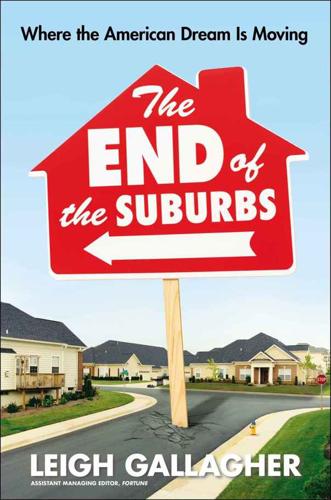
The End of the Suburbs: Where the American Dream Is Moving
by
Leigh Gallagher
Published 26 Jun 2013
When the buildings or houses that line the street are set far back and spaced wide apart, it creates an atmosphere of more open road—less “lateral friction,” in transportation engineerspeak—which encourages speed; when buildings or homes are built closer to the road and closer to one another, it creates a sense of “spatial enclosure” and encourages drivers to go slower. “The wider the street and the less lateral friction a motorist has, the faster a motorist is going to go,” says Dumbaugh. Jeff Speck, a renowned city planner and author of Walkable City: How Downtown Can Save America, One Step at a Time, puts it another way: “Most motorists drive the speed at which they feel comfortable, which is the speed to which the road has been engineered.” Some of the most dangerous roads in all of suburbia are the arterial roads, the faster-moving commercial thoroughfares that connect suburbs to one another.
…
Norton, 2011); John Pulcher, “Public Transportation,” in Susan Hanson and Genevieve Giuliano, The Geography of Urban Transportation, 3rd ed. (Guilford Press, 2004). We have the highest per capita: World Bank statistics. One study found a nearly 500 percent: Peter Swift, “Residential Street Typology and Injury Accident Frequency,” June 1997; updated 2002, 2006. Jeff Speck, a renowned city planner: Jeff Speck, Walkable City: How Downtown Can Save America, One Step at a Time (Farrar, Straus and Giroux, 2012), p. 172. Specifically, Dumbaugh found: Eric Dumbaugh and Robert Rae, “Safe Urban Form: Revisiting the Relationship Between Community Design and Traffic Safety,” Journal of the American Planning Association 75, no. 3 (Summer 2009): 309–29.
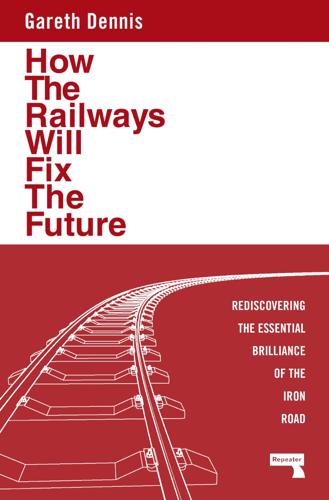
How the Railways Will Fix the Future: Rediscovering the Essential Brilliance of the Iron Road
by
Gareth Dennis
Published 12 Nov 2024
This change to our built-up spaces has fragmented populations, shattered communities and entrenched isolation for hundreds of millions of people worldwide. For the global north, this is resulting in an enormous burden of care as our ageing populations are consequently less and less independent without the mobility provided by walkable cities augmented by good public transport. This results in more reliance on frontline healthcare services, in turn resulting in worse overall outcomes for everyone relying on their nation’s health system. No technology can solve this, despite the claims of the tech industry and its coalition with liberal politicians across the globe.
…
With links across the planet so greatly improved, there will no longer be the ability to exploit pockets of workers, and so rather than replacing humans, automation will ensure that the productivity of a well-paid workforce is maintained and that a more skilled workforce spends as little time in manual labour as possible. Battery electric vehicles may be the future of cars, but they are certainly not the future of transport. The proliferation of walkable cities, facilitated by the ineffectiveness of the car compared to rail-based alternatives, means that vulnerable people will be less reliant on social services to live independent lives, allowing those resources to be focused on those still in need. Disabled people will no longer be trapped by inaccessible public transport or reliant on driving or being driven.

Straphanger
by
Taras Grescoe
Published 8 Sep 2011
Sprawl’s big bang came in the late ‘50s, when construction of Phoenix’s first federally funded freeway began, and the IRS allowed homeowners to include central air-conditioning in their home mortgages. (These days, summertime cooling bills for a three-bedroom house can easily top $500 a month.) In a single year, 1959, more houses were built than in the three decades before the end of the Second World War. As late as 1940, Phoenix was a walkable city covering a mere 17 square miles; it even had a small, but popular, streetcar network. After half a century of freeway building and rampant growth, Phoenix is the sixth-most-populous city in the United States. Its metropolitan area, which includes Scottsdale, Tempe, and Mesa, has a population of 4.3 million and covers 17,000 square miles—making it larger than the entire nation of Switzerland.
…
On its own, transportation, even coupled with the most up-to-date urbanism, is never going to be enough to revive a place whose economy is in the doldrums. If there are no jobs for people to get to, the most advanced bus rapid transit and light rail in the world will be useless. But transit is going to be a crucial ingredient in the coming urban renaissance. In an era of rising energy prices, when people are realizing that livable, walkable city neighborhoods make for attractive places to raise families, cities like Philadelphia, with their legacy of good transit and excellent urban structure, will be well placed to thrive. The First City may never attain the international stature of a New York, Shanghai, or London, but my guess is that, pretty soon, Philadelphia will be one great place to live.
…
Green Metropolis: Why Living Smaller, Living Closer, and Driving Less Are the Keys to Sustainability. New York: Riverhead Books, 2009. Rome, Adam. The Bulldozer in the Countryside: Suburban Sprawl and the Rise of American Environ-mentalism. New York: Cambridge University Press, 2001. Smith, P.D. City: A Guidebook for the Urban Age. New York: Bloomsbury, 2012. Soderstrom, Mary. The Walkable City: From Haussmann’s Boulevards to Jane Jacobs’ Streets and Beyond. Montreal: Véhicule, 2008. Acknowledgments Every book is a voyage, but this one felt like a three-year train trip—on good days by bullet train, but more often by sparking, backsliding, Toonerville trolley. Fortunately, there were people at every station stop to show me the right track; without them, I never would have made it home.
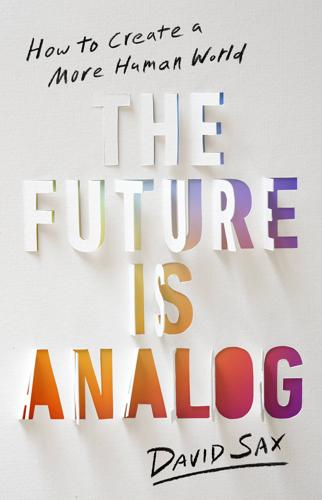
The Future Is Analog: How to Create a More Human World
by
David Sax
Published 15 Jan 2022
As Danish architect Jan Gehl put it, all the key objectives of city planning—lively cities, safety, sustainability, and health—are strengthened by encouraging more people to walk and bike and fewer to drive. “We are more innovative and more productive in a walkable urban environment,” said Christopher Leinberger, an urbanist academic and real estate developer and author of The Option of Urbanism, who lives in Washington, DC. Walkable cities and the walkable areas in cities are more valuable investments than car-centered suburban areas. They create more economic growth, and the real estate grows in value faster there than in the burbs. “The money is made in walkable urban places now. We overbuilt drivable suburban places.” What was the secret to it?
…
“It’s all about proximity to people,” Leinberger said. The denser a city is, the more walkable and pedestrian and bicycle friendly it becomes, the more people are able to connect with other people, exchange ideas face-to-face, form relationships, and spur innovation and growth. That exchange of ideas is the reason walkable cities have always existed and remain the city’s best future. The suburban car city of the past half century was an aberration—a wrong exit in the city’s evolution. “It’s no different than Jericho, the world’s first city, eight thousand years ago,” he said. “It’s the same mechanism.” The transformation over the past decades that returned cities to more walkable, livable places was decidedly analog.
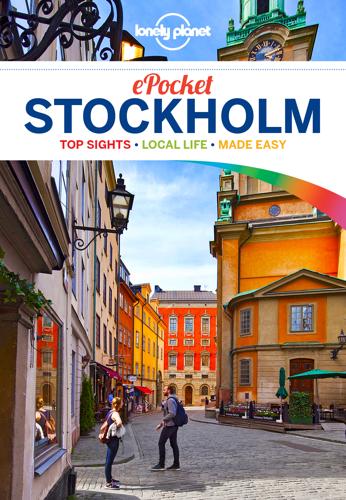
Pocket Stockholm Travel Guide
by
Lonely Planet
Contents QuickStart Guide Welcome to Stockholm Top Sights Local Life Day Planner Need to Know Stockholm Neighbourhoods Explore Gamla Stan Norrmalm Djurgarden & Skeppsholmen Sodermalm Ostermalm Millesgarden Museums of Gardet & Ladugardsgardet Kungsholmen Drottningholm Vasastan Stockholm Archipelago Best The Best of Stockholm Gamla Stan & Around Water's Edge Walk Eating Cafes Museums & Galleries Nightlife Live Music Shopping Fashion Design With Kids For Free LGBT Architecture Parks Festivals & Events Survival Guide Survival Guide Before You Go Arriving in Stockholm Getting Around Essential Information Language Behind the Scenes Our Writers Welcome to Stockholm Stockholmers call their compact, walkable city 'Beauty on Water'. But despite the gorgeous old town centre, Gamla Stan, Stockholm is no museum piece: it's modern, dynamic and ever-changing. This is a city of food obsessives, with good design a given across all aspects of daily life: if something can be beautiful as well as functional, why not make it so?

Boston Like a Local
by
Dk Eyewitness
Despite being cities in their own right, some surrounding areas like Cambridge and Somerville are considered part of the larger Metro Boston Region by virtue of their proximity to Boston. To help you get around, we’ve provided what3words addresses for each sight in this book, meaning you can quickly pinpoint exactly where you’re heading. On foot Boston is one of the most walkable cities around. In central Boston, nothing’s more than 30 minutes away by foot. The rest of the city is equally walkable, if you have the time and endurance (it’d take a few hours to cross the whole town). Sidewalks in historic districts like the South End and Beacon Hill can be narrow and bumpy, so be mindful of uneven bricks and cobblestones.
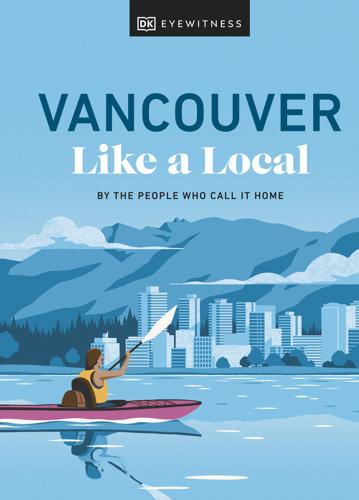
Vancouver Like a Local
by
Jacqueline Salomé
Clear sightlines to the sea, rivers, and mountains that surround the city will always act as your compass. Once you’ve got the city’s pattern down, Vancouver is pretty easy to navigate, but, to help you along the way, we’ve provided what3words addresses for each sight in this book, so you can quickly pinpoint exactly where you’re heading. On foot Vancouver is one of the most walkable cities in the world, and the main sights and neighborhoods are concentrated within a relatively small area. Tree-lined sidewalks take you to where you need to be, and the world’s longest uninterrupted seaside greenway, known as the seawall, spans some 17 miles (28 km), running all the way from the Vancouver Convention Centre to Spanish Banks Park on the Westside.
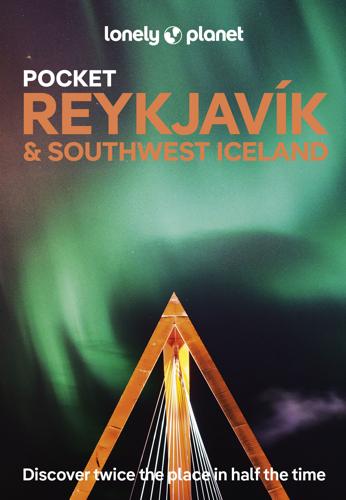
Lonely Planet Pocket Reykjavík & Southwest Iceland
by
Lonely Planet
Bus 15 stops near the Air Iceland Connect terminal and goes on to the Hlemmur bus stop. Boats A weekly return ferry runs from northern Denmark to Seyðisfjörður in East Iceland, stopping at the Faroe Islands. Several cruise lines sail to Iceland from Canada, Europe and the UK. Getting Around Reykjavík is a small, walkable city. It's easy to get around without a car, and you can take the bus if you're heading across town. Uber and Lyft are not available, and there are no trains. For the countryside, nothing beats the freedom of a car, but tours can take you there, too. Walking The best way to get to know this compact city is on foot.
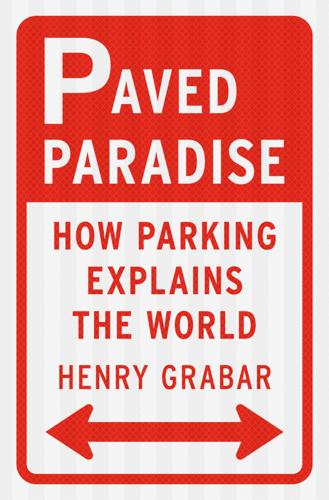
Paved Paradise: How Parking Explains the World
by
Henry Grabar
Published 8 May 2023
There were only so many American neighborhoods that even had the bones to support a car-free life; those were exactly the neighborhoods where rents were highest, and many barely permitted new housing at all. Parking minimums were not the only thing standing between the status quo and the revival of vibrant, walkable cities. For a builder, excising even surplus parking was tough. Parking may have been expensive and underused, and the curb right there for the taking, but arguing about it—paying months of interest on a construction loan to fight with the neighbors—was also expensive. Parking cost money, but it bought the acquiescence of politicians, lenders, and neighbors.
…
The vast subsidy for car parking was just part of the way the deck was stacked in favor of suburban life, from the mortgage interest deduction to biased lending practices to gerrymandered school districts to cheap gas and other unpriced externalities of driving. But in spite of all that, the most expensive places to live in the country were, by and large, densely populated and walkable city neighborhoods. If the market was sending a signal for more of anything, it was that. No sooner had I been convinced of this than the balance of city parking changed. On a deep level, the parking obsession kept people out: Parking laws made infill development impossible. Parking concerns torpedoed affordable housing.
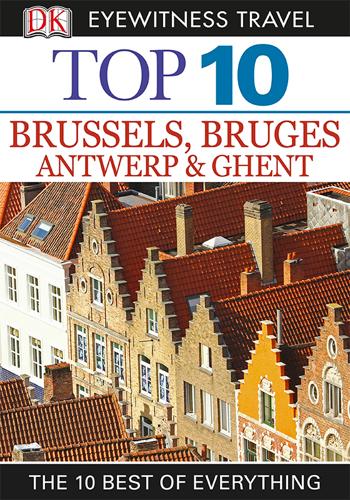
Top 10 Brussels, Bruges, Antwerp & Ghent
by
Antony Mason
In the late 19th century, antiquarians recognized Bruges as a historic gem, and began a campaign of preservation and restoration. The city has been a popular tourist destination ever since. In addition to its host of hotels, restaurants and bars, Bruges has internationally famous collections of art. It is also a wonderfully walkable city, with surprising views on every corner. View map Markt Markt The central marketplace of Bruges still retains much of its original outline and is the focal point of the city. It is the site of a market on Wednesday mornings, and a Christmas market (with an ice rink) in December.
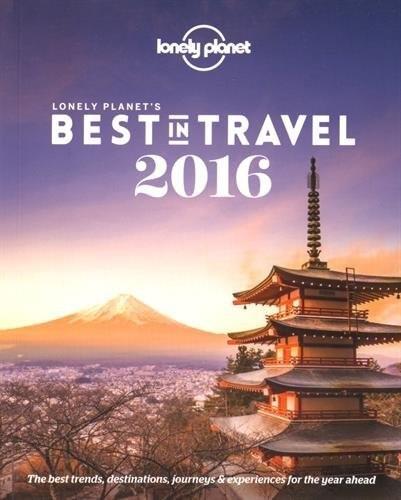
Lonely Planet's 2016 Best in Travel
by
Lonely Planet
Published 30 Sep 2015
These range from the physical: clearing trails, improving accessibility, and installing the latest technology, to the inspirational: hosting ‘discovery’ events, involving thousands of young people in volunteer programs, and promoting enjoyment of the parks to urban communities. What’s hot… Deep space, walkable cities, ‘small plate’ dining ___ What’s not… Spying, drones, oversized portions It’s serious work. Serious work that has the most wondrous end: discovery of the national parks themselves. Yosemite’s mighty granite cliffs and fairy-tale waterfalls, Zion’s claustrophobic slot canyons, the steamy swamps of the Everglades, howling wolves, soaring condors, glittering glaciers… There are 340,000 sq km (84.4 million acres) to choose from.
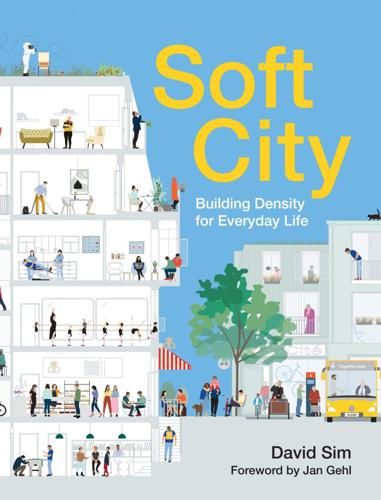
Soft City: Building Density for Everyday Life
by
David Sim
Published 19 Aug 2019
“Close encounters with buildings” in Urban Design International (2006) 11, 29-47. Time of Your Life 11 John Lennon, Beautiful Boy (1980). Getting About and Getting On 12 Jane Jacobs, The Death and Life of Great American Cities (New York: Random House 1961), 36-37. 13 ITDP, Pedestrians First. Tools for a Walkable City (ITDP, 2018). 14 See Jan Gehl. Cities for People (Washington D.C.: Island Press 2010). 15 Jan Gehl. Cities for People (Washington D.C.: Island Press 2010), 131-32. 16 Streets should make up for 30% of the area of a city according to UN Habitat: UN Habitat, Streets as Public Spaces and Drivers of Urban Prosperity (UN Habitat, Nairobi: 2013). 17 City of Perth: Two Way Streets (City of Perth 2014); more on the disadvantage of one way streets in Vikash V.
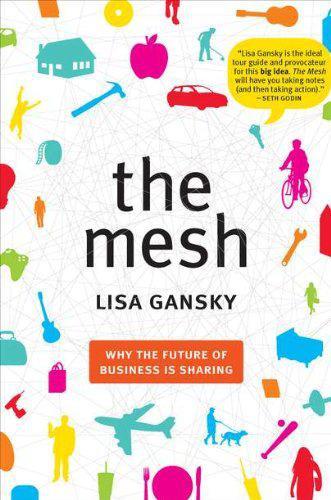
The Mesh: Why the Future of Business Is Sharing
by
Lisa Gansky
Published 14 Oct 2010
When there are more people nearby to easily access and share cars, clothes, or bikes, the service is more cost-effective and profitable. Partnerships are easier to find and execute. Share platforms such as restaurants, taxis, broadband wireless, apartment buildings, airports, and hotels are more profitable to expand in a denser municipal environment. No wonder that, even in the United States, walkable cities and neighborhoods designed along the lines of European “café society” have become more desirable. Real estate listings feature “walk scores.” There’s even a noticeable reverse migration from American suburbs back to the cities. Urban areas with greater density are also fertile ground for clusters of related Mesh businesses to take root and grow.
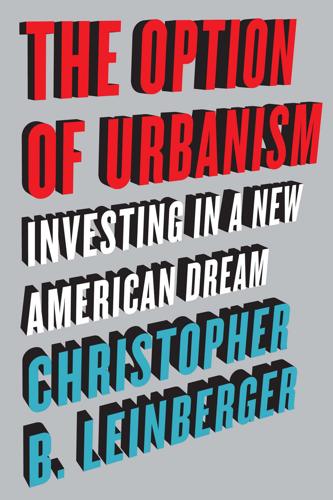
The Option of Urbanism: Investing in a New American Dream
by
Christopher B. Leinberger
Published 15 Nov 2008
We first settled in cities and then in classic suburban locations P R E FAC E | x i when my children were born. As my children were growing, we moved to an exurban location with plenty of land, though the children’s grade school and the country store and post office were all across the road within walking distance. Today, as empty-nesters, my wife and I live in a dense walkable city, able to walk or take transit to just about everything. We use the one car in the household about once a week. My family has experienced just about all forms of metropolitan living possible and has enjoyed each one. Attempting to answer that question I first posed to myself on Market Street in Center City, Philadelphia eventually led me to my first career as a real estate consultant.
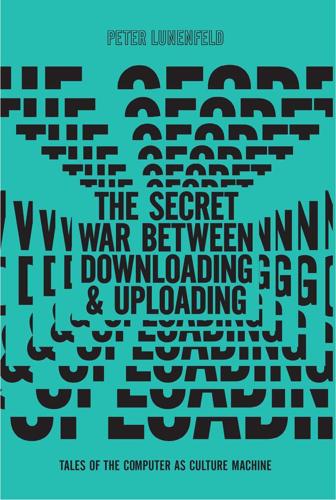
The Secret War Between Downloading and Uploading: Tales of the Computer as Culture Machine
by
Peter Lunenfeld
Published 31 Mar 2011
In any case, the best designers know that the choice of who not to work with is as often more important than who one does choose (or is forced to accept, simply to pay the rent). In a moment when sustainability is gaining more and more traction in design discourse, this future-as-client model moves designers past the defaults of nontoxic inks, recyclable consumables, and walkable cities into deep issues of sustainability, or the very future of design as a human activity. This is all well and good, but how to adopt the future as a client, what methods are available, and how can these methods function beyond the scope of traditional design and interest those of us who are not designers?

How We Got to Now: Six Innovations That Made the Modern World
by
Steven Johnson
Published 28 Sep 2014
But certainly there is a case to be made that the rise of Web advertising has been, all told, a negative development for the essential public resource of newspaper journalism. The same debate rages over just about every technological advance: Cars moved us more efficiently through space than did horses, but were they worth the cost to the environment or the walkable city? Air-conditioning allowed us to live in deserts, but at what cost to our water supplies? This book is resolutely agnostic on these questions of value. Figuring out whether we think the change is better for us in the long run is not the same as figuring out how the change came about in the first place.
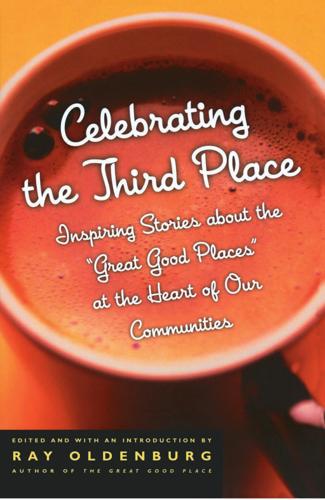
Celebrating the Third Place: Inspiring Stories About the Great Good Places at the Heart of Our Communities
by
Ray Oldenburg
Published 30 Nov 2001
Typically, a parade of inspectors is better at harassing than helping, and if the business is successful there are not likely to be any official thank-you’s. I have no doubt that the mayor’s hospitality toward new business reverberated in the hospitality the city now offers to all who live or visit there. Always a walkable city, its public sphere is now great fun to enter. Young Jim Maturani and Michael DeFazio, who opened on North Street, have since been joined by many others who bid welcome to those “on the town” or just seeking respite from daily routines. This medium-sized city hosts a public life that larger centers may well envy.
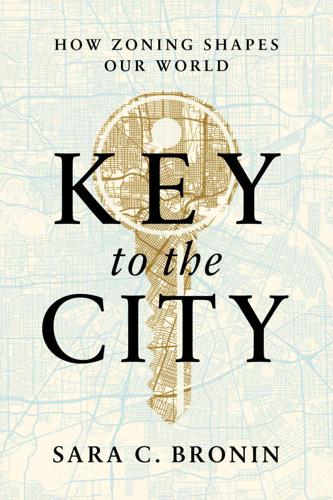
Key to the City: How Zoning Shapes Our World
by
Sara C. Bronin
Published 30 Sep 2024
To understand zoning’s shameful role in creating these parking craters, we should look not at Buffalo’s original 1926 code, adopted during the first wave of American zoning code enactments, but to its second, adopted in 1953, just as the automobile roared into American households and the urban-suburban exodus began nationwide. Many provisions in the second code—from single-use zoning to minimum lot-size mandates to parking requirements—squarely aimed to reorient a dense, vibrant, and walkable city around cars. Around the same time that code took effect, the city doubled down on highway construction and road expansions and dismantled a streetcar system that had successfully ferried passengers for about seventy years. Maybe Buffalo’s leaders thought that doing everything they could to promote cars was good for residents working in factories manufacturing steel and automobile parts.
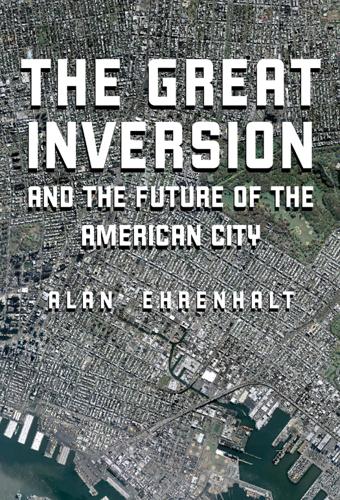
The Great Inversion and the Future of the American City
by
Alan Ehrenhalt
Published 23 Apr 2012
It may just be a collection of tall buildings arranged a little more compactly than the ones that are there now. In the summer of 2010, Tysons Corner was a jumble of construction activity, but it was all subway. The residential, retail, and office developers had all delayed their plans for the new walkable city, a casualty of the national bank lending crunch and a glut of suburban office space. But the county board had just reaffirmed its support for the entire project, residential towers, gridded streets, and all. The developers insisted they remained committed to it. All seemed convinced that when the transit line opens, New Urbanist development fervor will rise again.
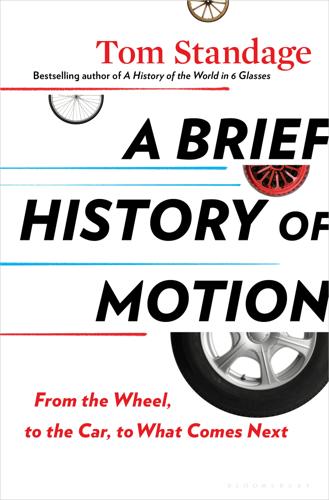
A Brief History of Motion: From the Wheel, to the Car, to What Comes Next
by
Tom Standage
Published 16 Aug 2021
Having grown up in Vienna, a pedestrian-friendly city with grand parks, public squares, and shopping arcades, Gruen was acutely aware of the lack of such communal spaces in suburban America, where everyone traveled by car. So when he was asked to design the Southdale shopping center, he saw it as an opportunity to create a new kind of place: an idealized version of a European, walkable city that would, he hoped, displace the sprawl of roadside shopping strips. The Southdale Center, the first modern enclosed shopping mall, in 1956. His plan placed a shopping center at the heart of a 463-acre development that also included apartment buildings, houses, schools, offices, a hospital, parks, and a lake.

Road to Nowhere: What Silicon Valley Gets Wrong About the Future of Transportation
by
Paris Marx
Published 4 Jul 2022
Making New Roads for Cars 1 Joe Cortright, “Reducing Congestion: Katy Didn’t,” City Observatory, December 16, 2015, Cityobservatory.org 2 Patrick Sisson, “Houston’s $7 Billion Solution to Gridlock Is More Highways,” Curbed, August 5, 2019, Archive.curbed.com. 3 Aaron Short, “A Great Big Freeway—Thanks to Induced Demand,” Streetsblog USA, May 8, 2019, Usa.streetsblog.org. 4 Jeff Speck, Walkable City: How Downtown Can Save America, One Step at a Time, North Point Press, 2012, p. 83. 5 Gilles Duranton and Matthew A. Turner, “The Fundamental Law of Road Congestion: Evidence from US Cities,” American Economic Association 101:6, 2011. 6 Ashlee Vance, Elon Musk: Tesla, SpaceX, and the Quest for a Fantastic Future, HarperCollins, 2015. 7 “The Boring Company Event Webcast,” The Boring Company, December 19, 2018, YouTube.com. 8 Ibid. 9 Aarian Marshall, “Elon Musk Reveals His Awkward Dislike of Mass Transit,” Wired, December 14, 2017, Wired.com. 10 Ibid. 11 “The Boring Company Event Webcast,” The Boring Company. 12 Laura J.
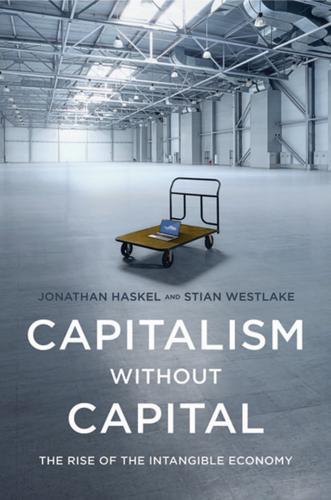
Capitalism Without Capital: The Rise of the Intangible Economy
by
Jonathan Haskel
and
Stian Westlake
Published 7 Nov 2017
The accidental discovery of new properties of technologies—like how the magnetron became the microwave—seems to be a common phenomenon. Based on this logic, if we want to increase productive investment in ideas, we should encourage “interdisciplinarity,” casual exchanges between people working in different fields and diverse places. Where these exchanges will happen a lot is in large, walkable cities with plenty of public spaces and opportunities for social interaction. On the other hand, sustained research in a particular area matters too. At least some of the synergies between different ideas work best in a particular field. The microwave oven was a success not just because of the radical leap from military communications to cooking, but also because lots of researchers from Amana, Litton, and their Japanese competitors worked on the design and improved the technology of the magnetron.

Green Metropolis: Why Living Smaller, Living Closer, and Driving Less Are Thekeys to Sustainability
by
David Owen
Published 16 Sep 2009
The city, belatedly, is building an ultramodern, fully automated subway and rail system, called Dubai Metro, but this attempt to graft transit onto a city like Dubai, even though the project is backed by what occasionally appears to be all the money in the world, is an enterprise destined to disappoint. People who use the new trains will still face the challenge of getting themselves from their metro stop to their final destination, since Dubai must be one of the least walkable cities in the world. I stayed in one small hotel and two big ones—including the Burj Al Arab—and there was no plausible destination to which I could have traveled on foot from any of them. Going from virtually anywhere in Dubai to virtually anywhere else means getting into a car and plunging into the permanent traffic jam that hogties the central city.
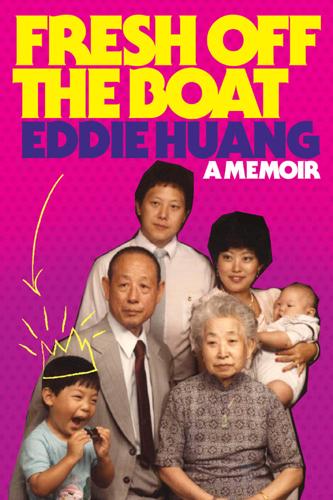
Fresh Off the Boat
by
Eddie Huang
Published 29 Jan 2013
Jamaicans, when making oxtail, will soak them in a solution of water and vinegar to let the blood out, then also flash-boil them to “cook off the first.” At our home, we’d flash-boil everything before braising or stewing because it was bad form if the meat had a “stink.” Andy Ricker tells me that in Thailand they won’t even eat lamb because of the smell. § What up, Theo! #LVRS 10. SPECIAL HERBS Pittsburgh was my first time in a walkable city and I finally didn’t need that goddamn Benz. We sold the car and off I went. My Da A-Yi, First Aunt, lived in Monroeville, just outside of the city, and owned Quality Furniture out there. My cousins Allen and Phillip also went to Pittsburgh, and we were all excited to be reunited. It would be the first time in nine years we’d be living in the same place—I was suddenly back like cooked crack and that’s how they treated me.
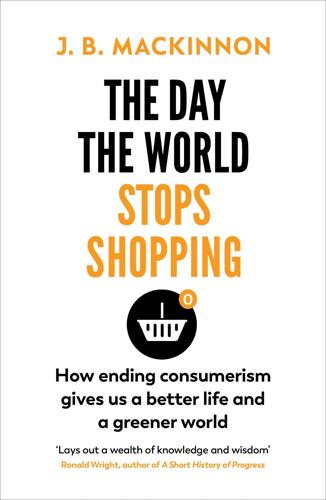
The Day the World Stops Shopping
by
J. B. MacKinnon
Published 14 May 2021
We’ve been asked to endure sweeping changes many times for lesser reasons. What about those technological solutions that have so far been held out as our best and only hope to save the planet? What about renewable energy? What about recycling, water conservation, organic farming, bicycle paths, electric cars, walkable cities and all the rest of it? Their potential to reduce the consumption of resources is as important as ever, or more so. The critical difference is that, if they are no longer as deeply undermined and counteracted by consumer culture, they may finally achieve their end. Technology can reduce the degree to which we need to cut back consumption; reducing consumption narrows the gap technology needs to span.
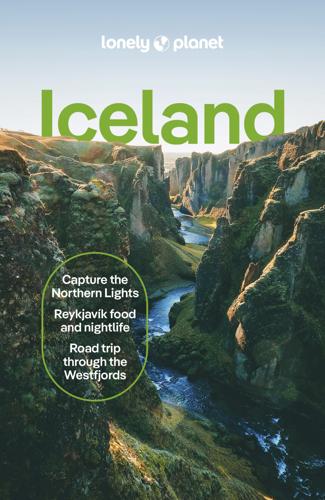
Lonely Planet Iceland
by
Lonely Planet
VESTURBÆR Historic Old Harbour. LAUGARDALUR & HLÍÐAR A scenic shoreline. ARBÆR Open-air turf house museum. KÓPAVOGUR Nature, industry and a lagoon. SELTJARNARNES A scenic peninsula. HAFNARFJÖRÐUR & GARÐABÆR Vikings and distilleries. Find Your Way Reykjavík is a small, walkable city. It’s easy to get around without a car, but you may want to take the bus if you’re heading across town or to a further-flung neighbourhood. Uber and Lyft are not available here, and there are no trains in Iceland. Plan Your Days Whether you’ve got 24 hours or several days, you can make unforgettable memories in Iceland’s capital.
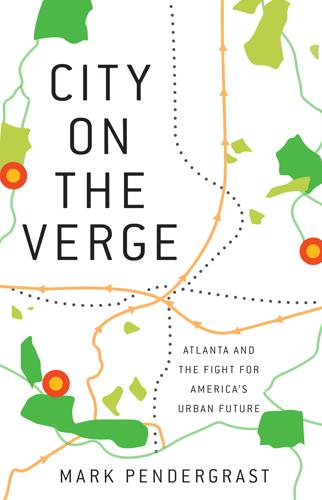
City on the Verge
by
Mark Pendergrast
Published 5 May 2017
Woodruff Foundations, Kaiser Permanente and Coca-Cola, and others, including individual wealthy donors such as Weeks or Delta Air Lines CEO Richard Anderson. Because of its low density, Atlanta has an inadequate tax base, and the state contributes little to the city coffers. Without the business elite’s support, few big public projects, including the BeltLine, could succeed. Ray Weeks is himself a late-life convert to walkable city living. Following his divorce and remarriage, he moved from his luxurious semi-rural Garraux Road address in Buckhead to a house near the Eastside Trail, and he has a home in Charleston, South Carolina. He boasts that he can walk virtually everywhere he needs to go in both locations. Still, Weeks is worried.
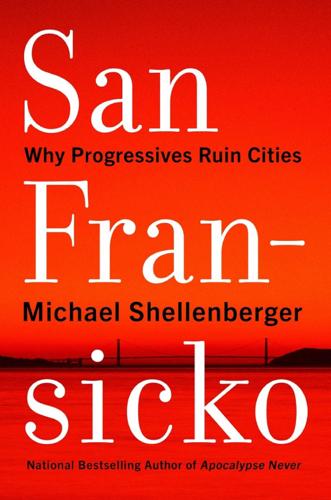
San Fransicko: Why Progressives Ruin Cities
by
Michael Shellenberger
Published 11 Oct 2021
The cabdriver was showing me all the sites when, at one point, he turned to me and said, ‘We have the best mental health care in the world, here.’ And I thought, ‘That’s pretty weird. I’ve never had a cabdriver in California say that to me.’ But that was part of who they are. There’s tremendous pride around that.”26 Progressives say they want livable, walkable cities, but by allowing the continued operation of open-air drug scenes, they are making cities unlivable and unwalkable, as well as inhumane. No psychologist or psychiatrist in America believes meth and fentanyl are appropriate medicines for schizophrenia, bipolar disorder, or depression. And yet taxpayers in the San Francisco Bay Area, Seattle, and Los Angeles are, in effect, subsidizing their use and abuse by giving away free hotel rooms, cash, food, and much else.
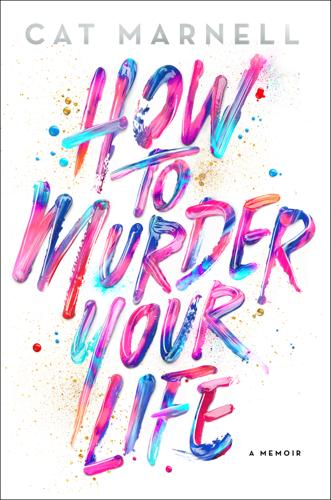
How to Murder Your Life: A Memoir
by
Cat Marnell
Published 30 Jan 2017
I didn’t sleep the whole nine hours; when we landed, I was un disastro. Thank God for town cars. I practically fell into mine. I felt better when I got to the Hotel Eden, though. It sat atop a hill, and the view from my suite was just glorious. I had time before the Gucci party, so I decided to go for a stroll. I’d never been to Rome. It’s a rather walkable city—especially if one is on Vyvanse—and so I had a nice time navigating the winding streets in the rain. Plus, there was great shopping—rosaries everywhere! I had to bring a few back to Marco. I stopped at a Bancomat machine by the Fontana di Trevi to take out some cash. Tra la la. It was lovely to be in Europe; I hadn’t been there since high school, and gee, look at those pigeons— INSUFFICIENT FUNDS, YOU SPOILED IDIOT DRUG ADDICT FUCKING RETARD LOSER BRAT, the Bancomat screamed at me.

City: A Guidebook for the Urban Age
by
P. D. Smith
Published 19 Jun 2012
According to the United Nations, ‘the battle for sustainable development, for delivering a more environmentally stable, just, and healthier world, is going to be largely won or lost in our cities’.25 With temperatures and population levels increasing, concentrating people in cities is a highly efficient way of bringing clean water, sanitation, healthcare and energy to large numbers of people, while minimising the per capita emissions of greenhouse gases. Public transport systems, the creation of walkable cities, as well as bicycle schemes such as those now operating in Paris, Montreal and London, can all help to reduce the reliance on individual cars in cities. By reducing our carbon footprint, urbanisation might just save the planet. One pioneering project that offers a glimpse of the sustainable cities of the future is Masdar City.

To Serve God and Wal-Mart: The Making of Christian Free Enterprise
by
Bethany Moreton
Published 15 May 2009
It drove locally owned businesses under, homogenized communities, and degraded the landscape—and all with help from the public purse. With the government contracting out its public housing to for-Â�profit developers, the tenants became loss leaders in a slick real-estate deal. Did residents of this famously walkable city really want to hike across acres of hot asphalt as Red Lobsters and Home Depots followed in the big blue wake of Wal-Mart? Was nothing sacred, demanded preservationists?4 But many of the store’s backers understood the sacred somewhat differently, as several of the prominent African-American ministers in their ranks attested.
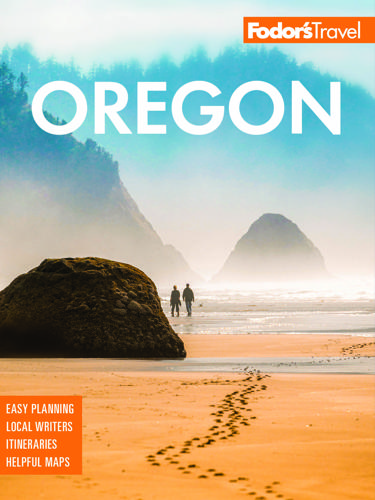
Fodor's Oregon
by
Fodor's Travel Guides
Published 13 Jun 2023
WELCOME TO CENTRAL OREGON TOP REASONS TO GO Escape into the wild: Pack your hiking boots, carabiners, snowboard, and camera to explore snowy mountains, rock formations, rivers, lakes, forests, ancient lava flows, and desert badlands. Get a taste of Bend: See the refined side of the high desert in Bend’s walkable city center, which is packed with upscale restaurants and bars, taprooms, boutiques, and food carts. Kick back at Sunriver: This riverfront resort has bike paths, hiking trails, horse stables, hot tubs, four golf courses, and several restaurants. Tour the brewery scene: With over 30 breweries—and more on the horizon—you can discover nearly any type of beer that fits your tastes.

Aerotropolis
by
John D. Kasarda
and
Greg Lindsay
Published 2 Jan 2009
This, he noted excitedly, was precisely the diameter of cities in antiquity—they were just wide enough to walk from the edge to the center and back in an hour’s time. Drawing on the empirical work of the economist Yakov Zahavi, he demonstrated that this pattern is fixed in history. The time we spend commuting has never changed, only our modes of transportation have. The Berlin of 1800 was a compact, walkable city. But as horse trams came along, followed by electric trams, then subways, and finally cars, the city’s periphery raced away from its Enlightenment-era core. Berlin’s diameter was effectively ten times wider in 1950 than it was 150 years earlier, yet it still took only an hour to traverse. The rule has since been dubbed Marchetti’s Constant.

Sweden Travel Guide
by
Lonely Planet
Gothenburg %031 / Pop 580,000 Gregarious, chilled-out Gothenburg (Göteborg) has considerable appeal for tourists and locals alike. Neoclassical architecture lines its tram-rattled streets, locals sun themselves beside canals, and there's always an interesting cultural or social event going on. Gothenburg is a very walkable city. From Centralstationen in the north, shop-lined Östra Hamngatan leads southeast across one of Gothenburg’s 17th-century canals, through verdant Kungsparken (King’s Park) to the city’s boutique and upscale bar-lined ‘Avenyn’ (Kungsportsavenyn) boulevard. The waterfront abounds with all things nautical, from ships, aquariums and sea-related museums to the freshest fish.

Ghost Train to the Eastern Star: On the Tracks of the Great Railway Bazaar
by
Paul Theroux
Published 9 Sep 2008
I tried to imagine the effect such a printed message would have today, anywhere in America, if it read ‘I am a citizen of Iran’ or ‘a member of Al Qaeda’ or ‘a Palestinian national,’ and made the same plaintive requests, with an enemy flag unfurled on it. Most of the museum-goers were Vietnamese. They and the museum attendants, seeing me, greeted me with a smile, asking where I was from. ‘America.’ ‘Welcome.’ I wanted to meet someone in Hanoi who had lived through the bombing. Hanoi was a walkable city. I strolled around for a few days, in the Old Quarter and among the huddled shops and temples and through the big market. I saw the water puppets and Ho’s mausoleum and the museum dedicated to Ho’s life and achievements. Rather than eating alone in a proper restaurant – a depressing activity anywhere, sitting and staring – I roamed and browsed and grazed, snacking on noodles and bowls of soup, chatting with people in fresh-beer bars and coffee shops, looking for witnesses.

Frommer's Egypt
by
Matthew Carrington
Published 8 Sep 2008
Worst-case scenario is a driver who decides to terminate the ride, in which case you can pick up the next black-and-white that comes along. All that has ever happened to me with this stunt is a somewhat sullen driver. 08_259290-ch05.qxp 80 7/22/08 12:29 AM Page 80 CHAPTER 5 . CAIRO ON FOOT At first glance, Cairo looks chaotic and terribly crowded with cars, donkeys, buses, and people, but it’s actually a surprisingly walkable city for the reasonably fit. Safety is a very minor concern in Cairo, with random violent crime virtually unheard of and pickpocketing rare. What is fairly common, however, is general hassling. In a car or on a bus, you’ll be cut off from the street, but walking through town there will be a lot of people who want to talk to you and get a tip.
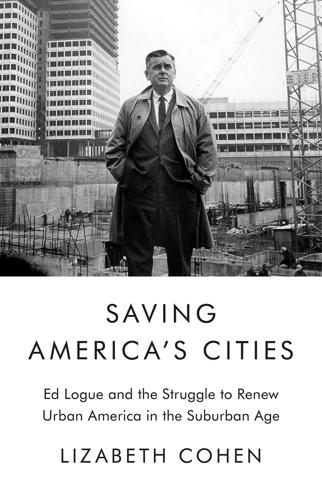
Saving America's Cities: Ed Logue and the Struggle to Renew Urban America in the Suburban Age
by
Lizabeth Cohen
Published 30 Sep 2019
,” 78. Logue explains “planning with people” in “Logue on Boston: ‘Never Satisfied,’” CSM, April 20, 1962. 91. Del Vecchio, “Topical Notes,” 5. 92. Margaret Logue, email message to author, March 21, 2011. The BG reporter Martin Nolan also recalled how much Logue loved Beacon Hill and the “walkable city” it was a part of; Martin Nolan, interview by Lizabeth Cohen, May 24, 2007, Cambridge, MA. 93. Logue, interview by Kennedy, 2. Logue discussed Collins’s strengths on many occasions; see for example, Logue, “Boston, 1960–1967—Seven Years of Plenty,” 83. 94. Arnone, “Redevelopment in Boston,” 143. 95.

The Rough Guide to Norway
by
Phil Lee
Published 25 Nov 2013
They begin with urbane, vivacious Oslo, one of the world’s most prettily sited capitals, with a flourishing café scene and a clutch of outstanding museums. Beyond Oslo, in roughly descending order of interest, are Trondheim, with its superb cathedral and charming, antique centre; the beguiling port of Bergen, gateway to the western fjords; gritty, bustling Stavanger in the southwest; and northern Tromsø. All are likeable, walkable cities worthy of time in themselves, as well as being within comfortable reach of some startlingly handsome scenery. Indeed, each can serve as a starting point for further explorations or as a weekend destination in their own right. And wherever you arrive, the trains, buses and ferries of Norway’s finely tuned public transport system will take you almost anywhere you want to go, although services are curtailed in winter.
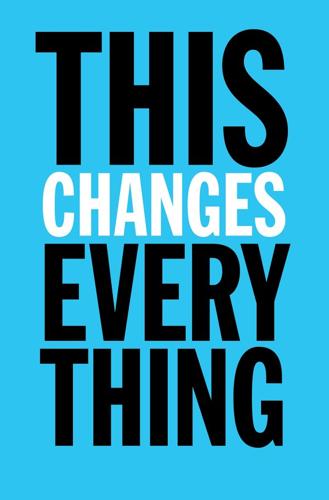
This Changes Everything: Capitalism vs. The Climate
by
Naomi Klein
Published 15 Sep 2014
The relative efficiency of the next generation of solar cells is trivial by comparison.”31 This book is about those radical changes on the social side, as well as on the political, economic, and cultural sides. What concerns me is less the mechanics of the transition—the shift from brown to green energy, from sole-rider cars to mass transit, from sprawling exurbs to dense and walkable cities—than the power and ideological roadblocks that have so far prevented any of these long understood solutions from taking hold on anything close to the scale required. It seems to me that our problem has a lot less to do with the mechanics of solar power than the politics of human power—specifically whether there can be a shift in who wields it, a shift away from corporations and toward communities, which in turn depends on whether or not the great many people who are getting a rotten deal under our current system can build a determined and diverse enough social force to change the balance of power.

Scandinavia
by
Andy Symington
Published 24 Feb 2012
Four Days As above, but with a little detour out of town on the third day – if the weather’s nice, rent a bicycle and follow the bicycle path to Drottningholm Slott . Keep the Swedish-history theme going with a meal at Den Gyldene Freden . Next day, take a boat tour onto the archipelago, then dine at the Grand Hôtel’s Verandan restaurant and finish in style with a drink at Operan . Sights Stockholm is a compact, walkable city, with sights distributed across all central neighbourhoods. The modern city spreads out from its historic core, Gamla Stan, home to the Royal Palace. Two smaller, satellite islands are linked to it by bridges: Riddarholmen, whose church is home to the royal crypt, to the west, and Helgeandsholmen, home of the Swedish parliament building, to the north.
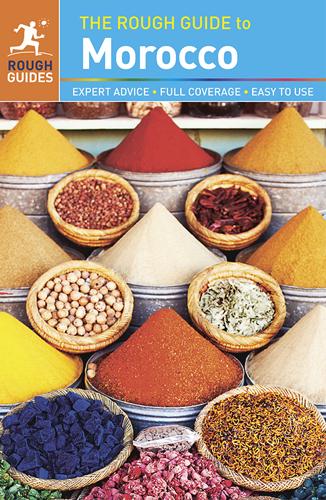
The Rough Guide to Morocco
by
Rough Guides
From the airport, bus #37 drops you off right next to the grand taxi station in Inezgane; for the bus station, just walk across to the other side of the grand taxi stands; buses to Agadir stop around the corner on the Agadir road. From Agadir, Inezgane can be reached by grand taxi from Place Salam (4dh, or 6dh at night), or on bus #97 or #98 from Avenue Mohammed V. GETTING AROUND Agadir is for the most part a walkable city, though you may want to use petits taxis for transport between the bus or taxi stations and Talborjt or the beach hotels. Alternatively, you can rent scooters or motorbikes, which would also allow you to explore the beaches north and south of town. By bus The main city bus terminal is at Pl Salam (Pl de l’Abbatoir), a couple of blocks north of the grand taxi station, but the most useful routes run along Bd Mohammed V.

The Rough Guide to Morocco (Travel Guide eBook)
by
Rough Guides
Published 23 Mar 2019
Destinations from Agadir: Aourir (20min); Inezgane (20min); Taghazout (25min); Taroudant (1hr 15min); Tiznit (1hr 45min). Destinations from Inezgane: Essaouira (2hr 30min); Guelmim (4hr 30min); Laayoune (9hr); Marrakesh (3hr); Massa (45min); Ouled Berhil (2hr); Ouled Teima (40min); Sidi Ifni (3hr 30min); Tan Tan (6hr 15min); Taroudant (1hr) and Tiznit (1hr 30min). Getting around Agadir is for the most part a walkable city, though you may want to use petits taxis for transport between the bus or taxi stations and Talborjt or the beach hotels. Alternatively, you can rent scooters or motorbikes, which would also allow you to explore the beaches north and south of town. By bus The main city bus terminal is at Pl Salam (Pl de l’Abbatoir), a couple of blocks north of the grand taxi station, but the most useful routes run along Bd Mohammed V; fares cost 3.5dh within town.
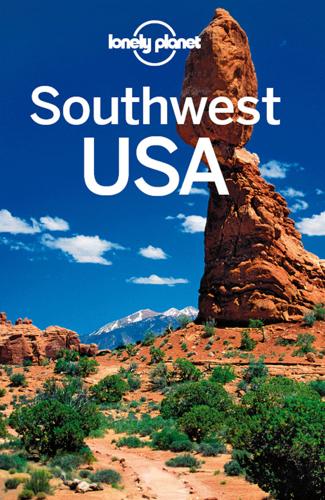
Southwest USA Travel Guide
by
Lonely Planet
Metropolitan Tucson Sights 1 Aerospace Maintenance & Regeneration Center C3 2 Arizona-Sonora Desert Museum A3 3 Gates Pass Scenic Overlook B3 4 Mission San Xavier del Bac B4 5 Old Tucson Studios A3 6 Pima Air & Space Museum C4 7 Sabino Canyon C2 Activities, Courses & Tours 8 Mt Lemmon Ski Area D1 Sleeping 9 Desert Trails B&B D3 10 Gilbert Ray Campground A3 11 Hacienda del Sol C2 Eating Grill at Hacienda del Sol (see 11) 12 Janos C2 13 Tiny's Saloon & Steakhouse B3 DOWNTOWN TUCSON Downtown Tucson has a valid claim to being the oldest urban space in Arizona. Although spates of construction have marred the historical facade, this is still a reasonably walkable city center. Tucson Museum of Art & Historic Block MUSEUM (520-624-2333; www.tucsonmuseumofart.org; 140 Main Ave; adult/child/student/senior $8/free/3/6; 10am-4pm Tue-Sat, noon-4pm Sun) For a small city, Tucson boasts an impressive art museum. There’s a respectable collection of Western and contemporary art, and the permanent exhibition of pre-Columbian artifacts will awaken your inner Indiana Jones.

Eastern USA
by
Lonely Planet
Amtrak ( 414-271-0840; 433 W St Paul Ave) runs the Hiawatha train seven times a day to/from Chicago ($22, 1½ hours); catch it downtown (it shares the station with Greyhound) or at the airport. The Milwaukee County Transit System (www.ridemcts.com; fare $2.25) provides the local bus service. Bus 31 goes to Miller Brewery; bus 90 goes to Miller Park. For taxi service, try phoning Yellow Cab ( 414-271-1800). Madison Madison reaps a lot of kudos – most walkable city, best road-biking city, most vegetarian friendly, gay friendly, environmentally friendly and just plain all-round friendliest city in the USA. Ensconced on a narrow isthmus between Mendota and Monona Lakes, it’s a pretty combination of small, grassy state capital and liberal, bookish college town.

The Rough Guide to France (Travel Guide eBook)
by
Rough Guides
Published 1 Aug 2019
Guided tours Numerous guided tours (2hr; €12–15, free with Lyon City Card, see box below) are offered by the tourist office; for example, the silk tour explores the former silk-workers district of Croix-Rousse, another tour delves into the complex web of Lyon’s famous traboules, and there’s a gastronomic tour, complete with tasting. Lyon Bike Tour run guided city tours by electric bike (from €30; lyonbiketour.com), meeting by the Palais de Justice on quai Romain-Rolland – all except the shortest tour (1hr 30min) include a culinary pit stop. GETTING AROUND Lyon is an eminently walkable city, but you may wish to make use of the excellent public transport system if hopping between the Presqu’île, Vieux Lyon and modern Lyon. Public transport This comprises four métro lines, four tramlines, as well as trolleybuses, buses and two funiculars (ficelle). The métro runs 5am–12.15am, with the most important bus lines running until 10 or 11pm.

The Rough Guide to South America on a Budget (Travel Guide eBook)
by
Rough Guides
Published 1 Jan 2019
It has little in the way of tourist sights, though its huge student population ensures a high concentration of lively bars. Founded in 1550, the city was the administrative and military capital of colonial Chile. It suffered considerable structural damage in the huge 2010 earthquake. What to see and do The heart of Concepción’s walkable city centre, lined with a mixture of elegant old buildings and modern concrete blocks, is the carefully landscaped Plaza de la Independencia. Partially pedestrianized Barros Arana, the main thoroughfare, has shops and places to eat, while at the western end lies the lively Barrio Estación, whose trendy bars and restaurants are centred on Plaza España.

USA Travel Guide
by
Lonely, Planet
Amtrak ( 414-271-0840; 433 W St Paul Ave) runs the Hiawatha train seven times a day to/from Chicago ($22, 1½ hours); catch it downtown (it shares the station with Greyhound) or at the airport. The Milwaukee County Transit System (www.ridemcts.com; fare $2.25) provides the local bus service. Bus 31 goes to Miller Brewery; bus 90 goes to Miller Park. For taxi service, try phoning Yellow Cab ( 414-271-1800) . Madison Madison reaps a lot of kudos – most walkable city, best road-biking city, most vegetarian friendly, gay friendly, environmentally friendly and just plain all-round friendliest city in the USA. Ensconced on a narrow isthmus between Mendota and Monona Lakes, it’s a pretty combination of small, grassy state capital and liberal, bookish college town.